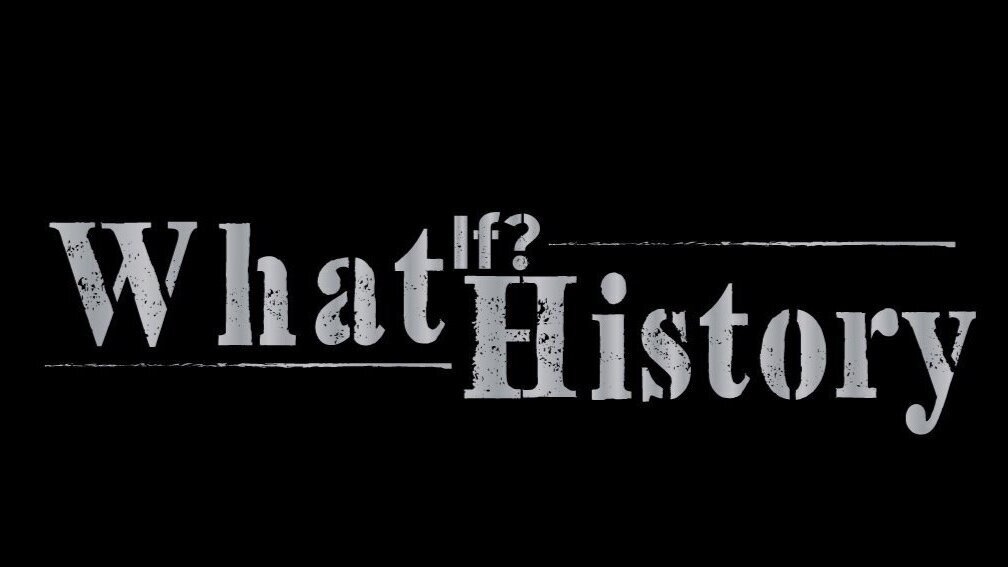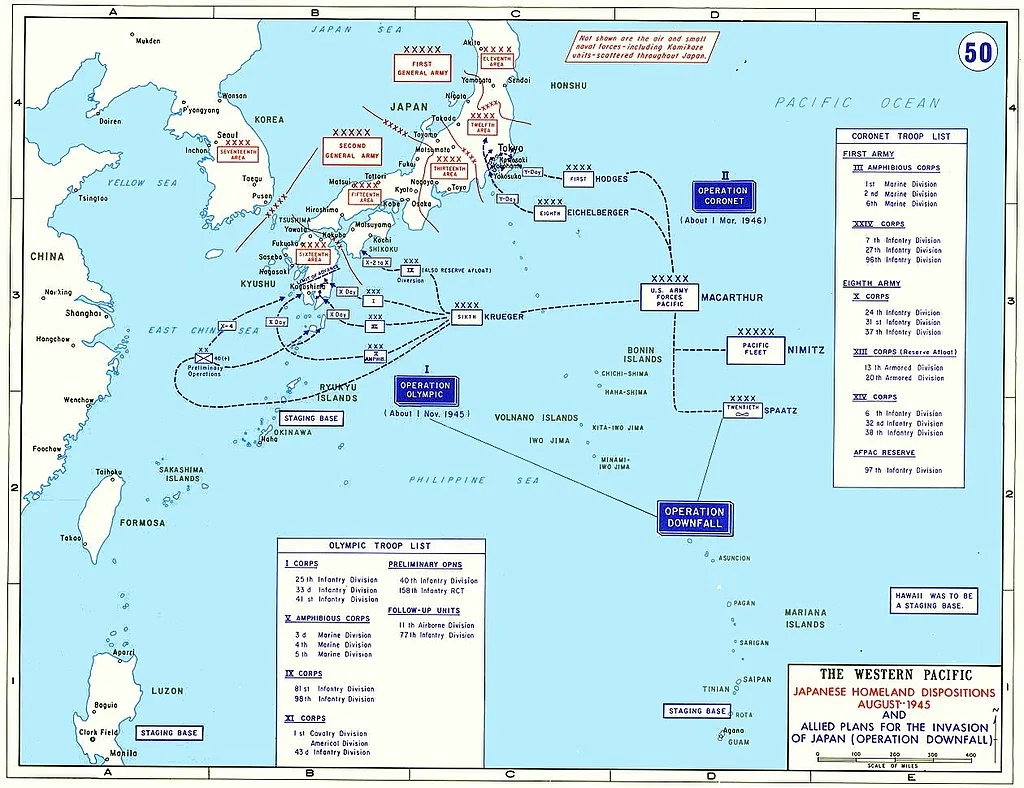What would an Invasion of Japan in 1945 Look Like?
August of 1945 heralded the beginning of a new era in warfare, the introduction of the atomic bomb. The strikes against Hiroshima and Nagasaki, while it was hoped they would cause Japan to surrender to surrender and end the war, the expectation was that they would continue to fight. America had already begun planning for an invasion of Japan with upwards of 5,000,000 American and 1,000,000 United Kingdom forces taking part, starting in November of 1945.
The plan was codenamed Operation Downfall with two sub operations, Operation Olympic and Operation Coronet taking place in November 1945 and March of 1946 respectively. Planners were unaware of the existence of the Manhattan Project so their considerations did not take into account atomic weapons or their usage.
Operation Olympic called for an invasion of the Japanese island of Kyūshū with air support coming from the recently captured island of Okinawa. The projected strength of the invasion force was to be over 800,000 personnel and almost 135,000 vehicles spread across 11 infantry divisions and 3 marine divisions. This force would secure the island of Kyūshū and suitable land for airbases which would support the following invasion of Honshu, where Tokyo was located. The goal was not to take over the entire island but merely to have enough staging to continue with Operation Coronet.
Operation Coronet, centered on Honshu, would have involved upwards of 1,172,000 men spread across 20 infantry, 3 marine, and 2 armored divisions including the 1st Army that was slated to be transferred from the European theater to the Pacific. All told, almost 40 divisions would have been involved in the initial landings and follow up forces meaning it would have been the largest amphibious invasion in history.
The general belief at the time was this force would have been 100% American with no involvement of the other allies but vigorous debate occurred over this point with allied forces requesting to have their combat forces included in the invasion of command, a request that was eventually accepted by American planners.
As American planners became aware of the Manhattan Project, particularly after the weapons usage in August, they began to devise plans to utilize devices to help destroy components of the Japanese Army. It was projected that 15 devices would be available for the invasion in November with planners stating that American forces could not enter areas where the devices were used for 48 hours afterwards. The lack of knowledge and understanding regarding the weapons would have resulted in thousands of casualties due to radiation sickness if this part of the plan had been carried out as 48 hours would not have been nearly enough time.
The general feeling was the Japanese were willing to fight to the death in order to save their homeland. Over 4,300,000 military soldiers would be engaged in the defense of the homeland and over 28,000,000 civilians where given very basic training as well as whatever weapons the government could find to help them fight back against the invaders and take part in a guerrilla war campaign. It was expected that the civilians would, instead of welcoming the American forces as was seen in parts of Europe, create chaos and fight to the death to attempt to stop the invaders. It is important to note that while the Japanese were able to muster a very large force of defenders, only roughly 30 divisions worth of ammunition could be mustered for the defense meaning many of the forces would be equipped inadequately to fight.
Furthermore, Japanese plans called for various forms of suicide attacks. Over 10,000 aircraft were prepared by the army and navy to be utilized as kamikaze attackers while over 2,500 manned torpedoes and suicide boats were readied to strike American ships. What was left of the Imperial Japanese Navy would be docked near valuable targets and lend their weapons to the already emplaced anti-aircraft defenses as not enough fuel could be procured to allow the ships to fight in the open seas. Divers were trained to affix mines to landing craft as the approached the beach, resulting in the divers deaths but also destroying the landing craft and thousands of mines were pre-positioned under the water so that the divers would not have to carry them out to sea when the invasion came.
Estimated varied wildly as to how many casualties would be inflicted against American forces by the time the invasion forces succeeded in their goal of bringing about an end to the war. Official estimates only called for around 150,000 casualties in the first 90-120 days of the invasions while other estimates from political leaders and journalists expected anywhere from 500,000 to 1,000,000 fatalities among American forces by the time the Japanese surrendered due to the expected resistance by the civilian population. 500,000 Purple Heart medals were produced in anticipation for the invasion and to this day, over 120,000 of those medals still remained as of 2003. When taking into account that without an invasion of Japan, America experienced almost 500,000 killed throughout the course of World War II the projected causalities for the invasion are significant. Estimates of Japanese casualties are hard to determine, but looking at the invasion of Okinawa almost half of the pre-war civilian population of 300,000 were killed or committed suicide during that invasion.
While many people feel that the usage of atomic weapons was unnecessary, it is important to look back at the historical context in which they were used. Planners were looking at the largest invasion ever attempted with more casualties than America had experienced in the rest of the war put together. Estimates of destroyed naval ships were high enough to almost cause the plan to be scrapped on that fact alone! Civilian casualties were already astronomical with more Japanese civilians dying by fire bombing than both atomic bombs put together. When taken into this context, this author can easily understand why the usage of atomic weapons to hasten the end of the war and spare lives was made.
Today Japan is an economic success and a strong ally of America. How might the post-war world have changed if America had been forced to invade Japan? How many millions more deaths to the already unimaginable death toll that World War II had would have occurred? Would it have been worth it?



